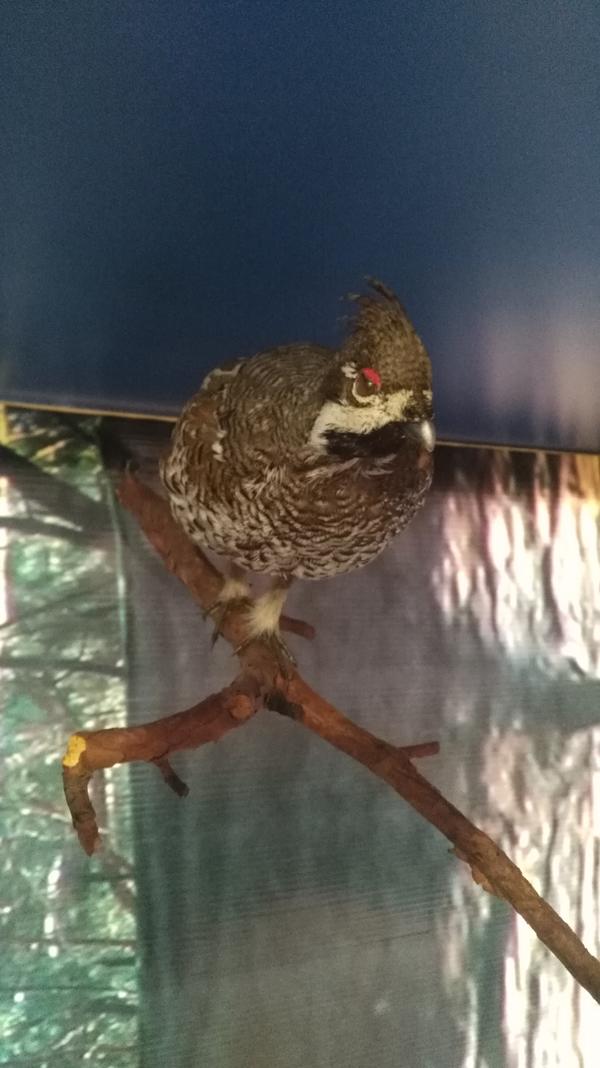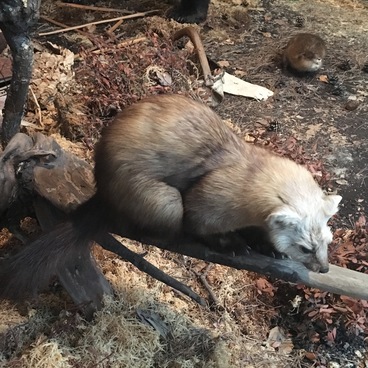The hazel grouse is a bird from the Galliformes order, related to the wood grouse, the black grouse and the partridge. Its Latin name is Bonasa bonasia. The hazel grouse was named after its characteristic dapple plumage: it is covered with black, red, brown and white spots and stripes. It has a bright red ring around its eye.
The hazel grouse is a small bird: its weight varies from 305 to 560 grams. It depends on the season: the birds reach their maximal plumpness at the end of autumn and beginning of winter. And in the cold season they lose a lot of weight.
This species usually builds its dwellings in mixed forests: the more they are cluttered with windfall, the better. These birds are afraid of open spaces and are very rarely seen there. The hazel grouse spends most of its time on the ground and lead as secret lifestyle. When a person approaches, they immediately run away or hide. The grouse runs fast, deftly maneuvering in the forest. While it is running, it is slightly humping, pulling its neck and head forward.
Caught by surprise, the hazel grouse claps its wings, flutters up rising no higher than the middle of trees. It usually flies 40-80 meters and sits on a coniferous branch close to the trunk, trying to merge with it. The grouse almost never gives a voice: its long whistle can be heard mainly in quiet weather.
This species is sedentary and does not fly to warm lands for the winter. The hazel grouse, like all grouses, mainly feeds on vegetation, which is very difficult to get in the cold season. Birds have to eat malnourished buds and catkins. In summer, food is more diverse: it can be greens, flowers or berries. The hazel grouse also eats insects and other terrestrial invertebrates.
On the coldest days, the bird buries itself in the snow and spends most of the day in it.
The snow also protects it from predators, from which they suffer at any time of year. The number of hazel grouses is also decreasing due to hunters. The Soviet Union established the supply of this bird’s meat to foreign countries: hundreds of thousands of carcasses were sent to different countries. Grouse meat is still considered to be a delicacy: gourmets appreciate it for its bitterish taste and resinous scent.
The hazel grouse is a small bird: its weight varies from 305 to 560 grams. It depends on the season: the birds reach their maximal plumpness at the end of autumn and beginning of winter. And in the cold season they lose a lot of weight.
This species usually builds its dwellings in mixed forests: the more they are cluttered with windfall, the better. These birds are afraid of open spaces and are very rarely seen there. The hazel grouse spends most of its time on the ground and lead as secret lifestyle. When a person approaches, they immediately run away or hide. The grouse runs fast, deftly maneuvering in the forest. While it is running, it is slightly humping, pulling its neck and head forward.
Caught by surprise, the hazel grouse claps its wings, flutters up rising no higher than the middle of trees. It usually flies 40-80 meters and sits on a coniferous branch close to the trunk, trying to merge with it. The grouse almost never gives a voice: its long whistle can be heard mainly in quiet weather.
This species is sedentary and does not fly to warm lands for the winter. The hazel grouse, like all grouses, mainly feeds on vegetation, which is very difficult to get in the cold season. Birds have to eat malnourished buds and catkins. In summer, food is more diverse: it can be greens, flowers or berries. The hazel grouse also eats insects and other terrestrial invertebrates.
On the coldest days, the bird buries itself in the snow and spends most of the day in it.
The snow also protects it from predators, from which they suffer at any time of year. The number of hazel grouses is also decreasing due to hunters. The Soviet Union established the supply of this bird’s meat to foreign countries: hundreds of thousands of carcasses were sent to different countries. Grouse meat is still considered to be a delicacy: gourmets appreciate it for its bitterish taste and resinous scent.



